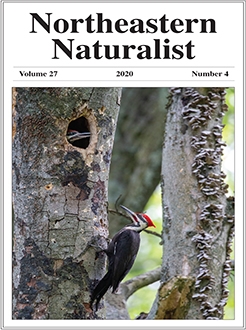Site fidelity can have significant impacts on population dynamics and may be influenced by both demographic and environmental characteristics, including age, sex, and habitat quality. We examined breeding-site fidelity of Setophaga cerulea (Cerulean Warbler), a small Nearctic–Neotropical migrant that is listed as endangered in Indiana and in decline throughout its range. Our research was part of a long-term demographic study in the research units of the Hardwood Ecosystem Experiment, southern Indiana. From 2013 to 2018, we banded 128 Cerulean Warblers, 10.2% of which returned the year following initial capture and banding. We did not find significant differences in return rates between adult males (n = 92) and adult females (n = 19; P = 0.69), novice (second-year, n = 20) and experienced (after-second-year, n = 91; P = 1) birds, or successful (n = 40) and unsuccessful breeders (n = 26; P = 0.39). We have yet to detect a bird banded as a hatch-year subsequently return the following season as a second-year (n = 0/17). Our return rates are likely affected by a combination of mortality between breeding seasons, our ability to detect returning birds, and dispersal between breeding seasons. We encourage other researchers to publish rates of Cerulean Warbler site fidelity across its range for comparison of populations and habitats to determine source/sink dynamics.
How to translate text using browser tools
16 November 2020
Low Breeding-Site Fidelity Suggests Dispersal of Cerulean Warblers
Brandon M. Connare,
Clayton D. Delancey,
Alexander R. Sharp,
Garrett J. MacDonald,
Kamal Islam
ACCESS THE FULL ARTICLE

Northeastern Naturalist
Vol. 27 • No. 4
December 2020
Vol. 27 • No. 4
December 2020




